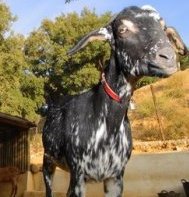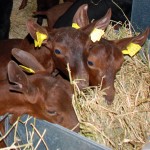New strategies to improve tuberculosis control in goats

Dr. Bernat Pérez de Val, researcher of CReSA, read his thesis titled “New vaccines and diagnostic strategies for the control of tuberculosis. The goat model”, where he studies the efficacy of new vaccines and diagnostic reagents to fight against this infectious disease caused by Mycobacterium tuberculosis complex bacteria, which possesses high rates of mortality and morbidity worldwide.
For the studies, Dr. Pérez de Val developed a new experimental animal model. Thus, he chose the domestic goat, since tuberculosis is significantly prevalent in this specie, with the goal to assess alternatives to the Bacillus Calmette Guerin (BCG), the only available vaccine nowadays, which presents high variability in effectiveness as much in human as in animals.
 Therefore, the research was fractionated in four experiments, using different vaccination strategies (BCG alone, BCG in combination with a two adenoviral vaccines, and a paratuberculosis vaccine), and evaluating new diagnostic reagents, designed following the DIVA principle (differentiation of infected and vaccinated animals). The results have shown that vaccination, together with the DIVA-based diagnostic, can facilitate tuberculosis control in goat herds. In addition, the domestic goat may be a suitable animal model for testing new tuberculosis vaccines.
Therefore, the research was fractionated in four experiments, using different vaccination strategies (BCG alone, BCG in combination with a two adenoviral vaccines, and a paratuberculosis vaccine), and evaluating new diagnostic reagents, designed following the DIVA principle (differentiation of infected and vaccinated animals). The results have shown that vaccination, together with the DIVA-based diagnostic, can facilitate tuberculosis control in goat herds. In addition, the domestic goat may be a suitable animal model for testing new tuberculosis vaccines.
Bernat Pérez de Val E-mail: Bernat.Perez@cresa.uab.cat Telephone: +34 93 581 45 93; Fax: +34 93 581 44 90 Edifici CReSA. Campus UAB, 08193, Bellaterra (Barcelona)













